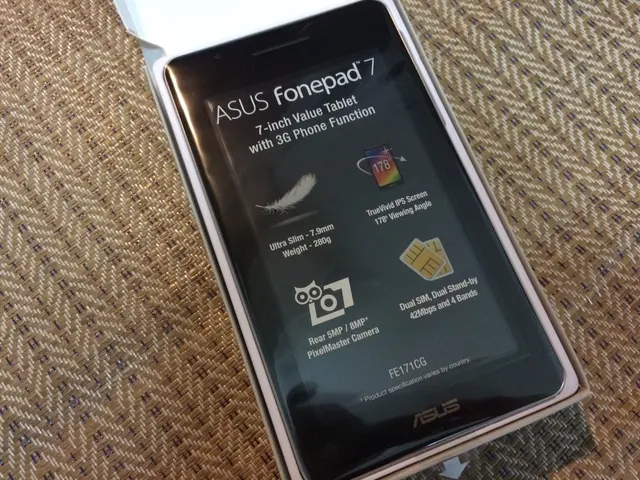Barriers in electric vehicle (EV) adoption as main automobiles due to worry about running out of charge and inadequate infrastructure: Maruti Suzuki
Maruti Suzuki India Ltd (MSIL) has announced the launch of its electric SUV, the e-Vitara, this fiscal year. The company's Managing Director, however, has urged the government not to favour a single technology with incentives or tax benefits, maintaining that all vehicular technologies should be available in the domestic market, allowing consumers to choose based on their needs.
The electric vehicle (EV) segment in India is growing, but customers still prefer traditional vehicles as their primary choice due to range anxiety. MSIL has highlighted this issue, stating that customers who want to buy an EV do not want to buy it as their first car because they feel they can't travel far or get stuck during the rains.
To address this concern, many original equipment manufacturers (OEMs) are addressing range anxiety by launching EVs with a 500-kilometer range. However, the lack of public charging infrastructure remains a significant issue in the EV market. MSIL is working to establish charging infrastructure in 100 cities, aiming to alleviate this problem.
India's public EV charging infrastructure has expanded rapidly, growing more than five-fold from about 5,151 stations in 2022 to over 26,000 by early 2025. This expansion corresponds to a compound annual growth rate of approximately 72% from FY22 to FY25. Key government initiatives backing this growth include the continuation and enhancement of the Faster Adoption and Manufacturing of Hybrid and Electric Vehicles (FAME) scheme, which has seen a significant budget increase to support charging infrastructure and public transport electrification. Production-linked incentive (PLI) schemes for battery manufacturing are also helping reduce import dependency and could contribute to making EVs more affordable.
Despite this impressive growth, challenges remain. The current ratio of charging stations to electric vehicles is approximately 1:235, which is low compared to global leaders like China and Europe. Some regions, such as Bengaluru, face issues with non-operational or poorly maintained charging stations, which hinders user confidence and market growth.
To further enhance the charging network, the government is upgrading about 5,500 km of major national highways into "electric highways" under the National Highways for Electric Vehicles (NHEV) project. This initiative involves implementing public-private partnerships to install charging stations at intervals of roughly every 50 km, with additional amenities like roadside assistance and IoT-enabled monitoring, aimed at supporting both passenger and heavy-duty EVs and alleviating range anxiety for highway travel.
The number-wise growth of EV sales is 100%, reflecting a growing interest in electric vehicles. Electric passenger vehicle retail sales saw a year-on-year jump of 93 per cent in July, reaching 15,528 units compared to 8,037 units in the same period a year ago (FADA data). The total contribution of EV sales to the industry is 4.5%, up from 2.4% earlier.
The time required to charge a vehicle is also important for long-distance travel. The cost of charging a vehicle at home is ₹7 to ₹10 per unit, while charging outside public chargers costs ₹20-21 per kilowatt-hour (kWh). The Managing Director of Maruti Suzuki India Ltd emphasized the need for a public charging station every 50-100 kilometers to reassure customers on long journeys.
Currently, the total tax on EVs in India is 5 per cent (inclusive of GST), while a hybrid model is taxed at approximately 43 per cent. This tax discrepancy could potentially discourage the adoption of EVs. However, the government's focus on expanding and upgrading the charging infrastructure nationwide suggests a commitment to overcoming these challenges and encouraging EV adoption.
In summary, while India's public charging infrastructure has seen strong recent growth supported by robust government policies and investments, the network is still less dense and less reliable than in leading EV markets. Efforts continue to expand and upgrade charging stations nationally, especially on highways, to overcome range anxiety and improve EV adoption rates across the country.
- The electric vehicle (EV) industry in India is growing, but consumers are more inclined towards traditional vehicles due to range anxiety.
- Maruti Suzuki India Ltd (MSIL) has launched its electric SUV, the e-Vitara, this fiscal year, but the company's Managing Director urges the government not to favor a single technology.
- To address range anxiety, many Original Equipment Manufacturers (OEMs) are launching EVs with a 500-kilometer range, but the lack of public charging infrastructure remains a significant issue.
- MSIL is working to establish charging infrastructure in 100 cities to alleviate this problem, but the current ratio of charging stations to electric vehicles is low compared to global leaders.
- The government is upgrading about 5,500 km of major national highways into "electric highways" under the National Highways for Electric Vehicles (NHEV) project to improve EV adoption and reduce range anxiety for highway travel.
- The number of EV sales is growing at a rate of 100%, and the government's focus on expanding and upgrading charging infrastructure nationwide suggests a commitment to encouraging EV adoption.
- The Managing Director of Maruti Suzuki India Ltd highlighted the need for a public charging station every 50-100 kilometers on highways to reassure customers on long journeys.




